The 14 Best Day Trips From Paris
From Champagne to the Château de Versailles, these are the best day trips under two hours away from Paris.
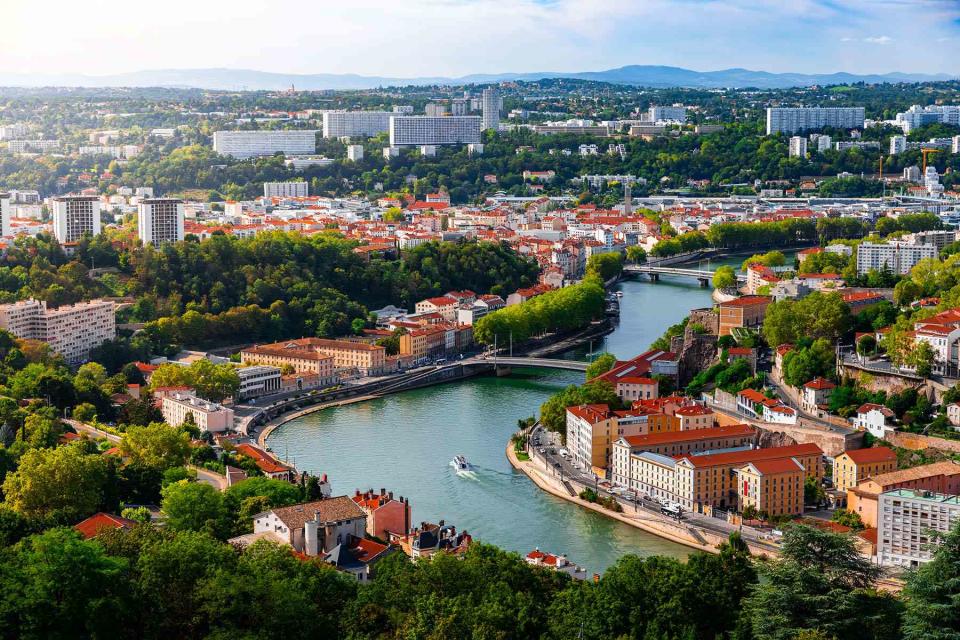
Gregory_DUBUS/Getty Images
While Paris has plenty to sustain a person — from world-class museums and designer ateliers to shops that pair artisanal ice cream with natural wine — there comes a time when one must journey beyond the Périphérique (the ring road surrounding the city), and not just to shop around the famous Marché aux Puces Saint-Ouen. One of the city’s best offerings is the accessibility of its surroundings, from the lavish glamour of nearby Versailles to the quaint charm of Barbizon’s artist village in the Fontainebleau Forest.
While most of the destinations on this list are reachable by public transit (with trips made shockingly short thanks to the TGV, France’s high-speed railway), others are only a car ride away. If Paris is a moveable feast, consider these day trips an amuse bouche.
Whether you’re looking to stroll through the countryside, sip Champagne, or soak up some sun on the beach, these are the best day trips under two hours from Paris.
Versailles
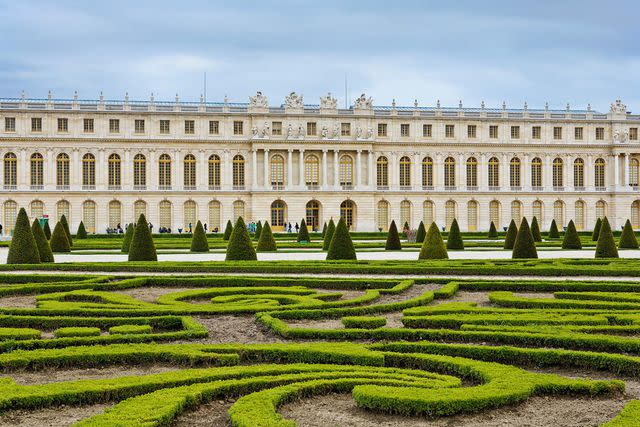
Rudy Sulgan/Getty Images
Let’s start with the most popular pairing: Versailles. Even for shorter sejours in Paris, a half-day visit to Versailles is a must for history buffs, aesthetes, and monarchists alike. It’s just over an hour away by car or on the RER (Paris’ commuter rail), making it one of the most convenient day trips. The opulent 17th-century château and marvelously manicured gardens cover nearly 2,000 acres, a portion of which you will stroll through with your jaw on the floor and your camera in hand. Famously the former home of Marie Antoinette, the crowning jewel of this visit is the Hall of Mirrors. If you’re feeling a bit peckish after touring the château, pop over to Michelin-starred La Table du 11 (and by pop over, we mean book a reservation several weeks in advance). Located in the charming Cour des Senteurs, it’s one of the chicest addresses in town, with a focus on sustainability and organic, locally-sourced produce.
Giverny
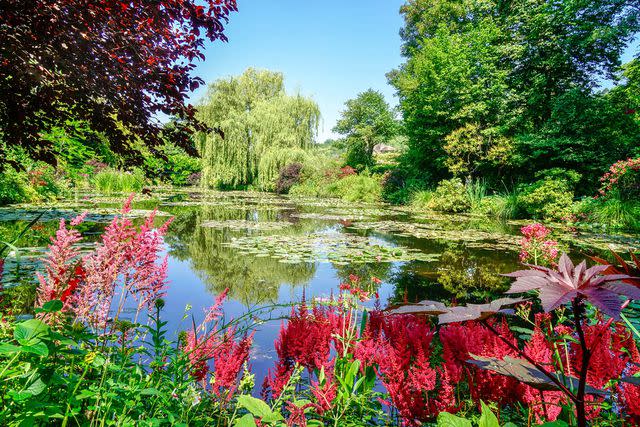
dasar/Getty Images
50 miles west of Paris, another beloved jaunt from the city center is Giverny, the former residence of renowned impressionist painter Claude Monet. Even if you’ve never heard of the two-and-a-half square mile village, you’re likely familiar with Monet’s “Water Lilies,” a series of 250 oil paintings inspired by the gardens around his home. Wander through the lush landscape of Fondation Monet and you’ll be unsurprised to find that it feels like walking through a work of art. A tour of the house offers glimpses of the artist’s tiled kitchen and sunny yellow dining room, as well as his art studio. Prime time to visit is April through October, with peak season falling from May to July when the space is spectacularly verdant and flowers are continuously in bloom. If you’re looking to extend your visit, the nearby Le Jardin des Plumes is the premiere dining destination in the area, serving up creative French fare in a rustic countryside estate.
Fontainebleau
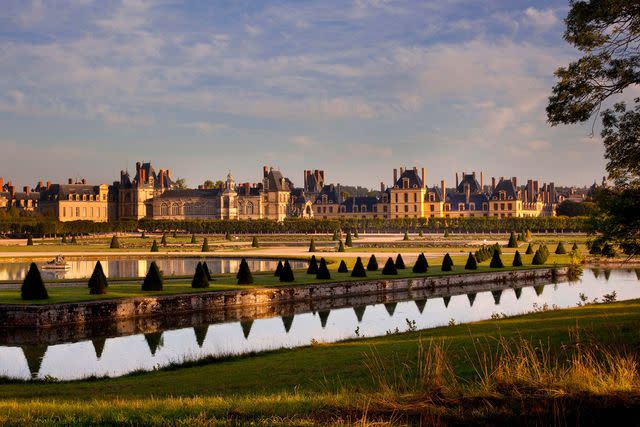
Adrian Pope/Getty Images
Just under an hour from the City of Light, Fontainebleau offers fairy-tale forests, drool-worthy gastronomic experiences, and the château of the same name that was dubbed “the true home of kings” by Napoleon. A museum dedicated to the Emperor is on display in the château, featuring mementos from his daily life, weapons he used in battle, and more. Reachable by train in just under an hour, Fontainebleau’s palace — a dedicated UNESCO World Heritage site — is the primary draw, featuring one of France's largest collections of decorative arts. For those looking for a breath of fresh air, there’s plenty else to keep you busy, from bouldering in the woods to produce shopping at the Marché de Fontainebleau (a thrice-weekly occurrence) or a fine-dining delight at L’Axel, a Michelin-starred restaurant helmed by Japanese chef Kunihisa Goto.
Barbizon
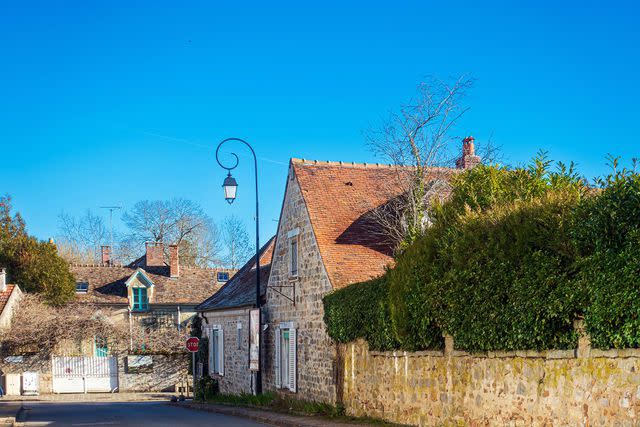
littleclie/Getty Images
Fringing the Forest of Fontainebleau is the quaint artist’s village of Barbizon. The birthplace of the Barbizon School (a movement towards realism and naturalism in art), it’s evident why the area drew 19th-century painters like Théodore Rousseau and Jean-François Millet, who immortalized the beauty of the surrounding landscape. Follow the cobblestoned main road to peek into modern galleries, Rousseau’s former abode, and Millet’s studio before stopping at The Auberge Ganne, a historic inn that welcomed many of the artists at the time and has since been preserved as the Museum of Barbizon Painters. A visit to Barbizon can easily be tacked on to a day in Fontainebleau, as the village itself is rather small.
Reims
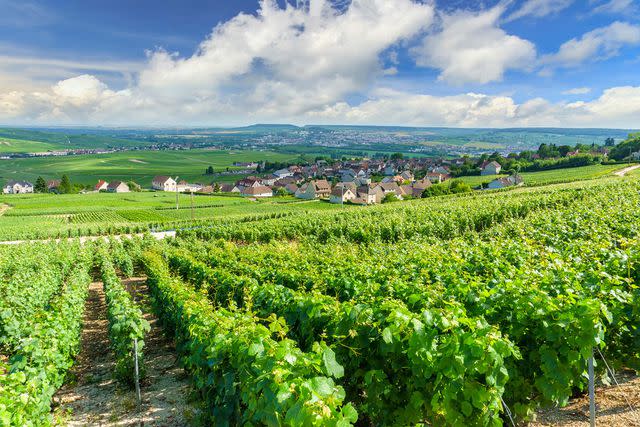
Pakin Songmor/Getty Images
While there are enough bars à vin (wine bars) in the French capital to sustain even the thirstiest traveler, a pilgrimage to Reims, the unofficial capital of Champagne, is a must for true oenophiles. Around 45 minutes away on the TGV, Reims is home to a number of Champagne houses, including Pommery and, famously, Veuve Cliquot — which offers tastings, tours of its cellars, and Madame Cliquot-themed tours around town. If visiting the Pommery estate, stop nearby at the Domaine Les Crayeres for a drink at the Relais & Châteaux property’s La Rotonde bar, which looks out over the magnificent grounds. Beyond all the day drinking, leave time to visit the Cathédrale Notre-Dame de Reims, a near-ruin that’s well worth a peek inside.
Chantilly
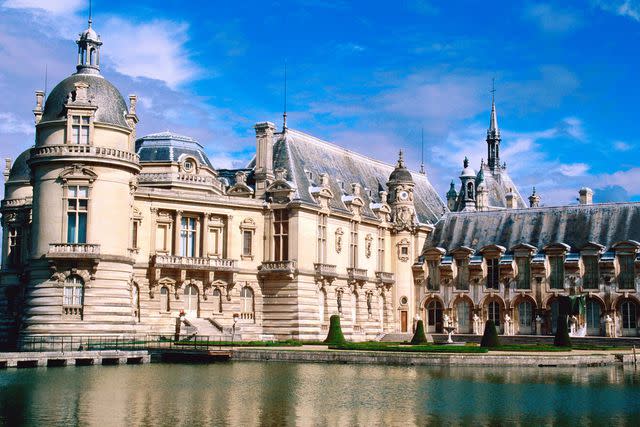
John Elk/Getty Images
When it comes to the crème de la crème of day trips, a visit to Chantilly — the home of whipped cream’s classier ancestor, Chantilly cream — is up there. Less than 30 minutes from Paris by train, the main draw of this region is the extravagant Château de Chantilly, famed for its manicured French gardens that are the signature of Andre Le Nôtre, whose masterwork was the gardens of Versailles. Art lovers will enjoy a visit to the château’s Musée Condé, which unexpectedly houses the largest gallery of antique paintings after the Louvre.
Lille
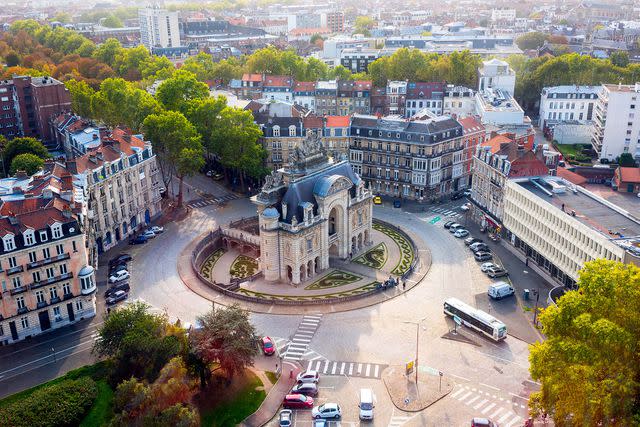
Pierre Longnus/Getty Images
Designated the “European Capital of Culture” in 2004, this bustling university town boasts everything you could expect from any cultural capital worth its salt, from a bustling gastronomic scene to troves of artwork and architectural marvels. Bordering France and Belgium, the Flemish-influenced old town, Vieux Lille, is très charmant (very charming) and centers around La Grande Place, a 17th-century square. A visit to the city is incomplete without a stop at the Opéra de Lille (remodeled in the early 1900s after the 18th-century original went up in flames), the Palais des Beaux Arts (one of the largest museums in France), and Méert, a patisserie famed for its gaufres (waffles).
Lyon
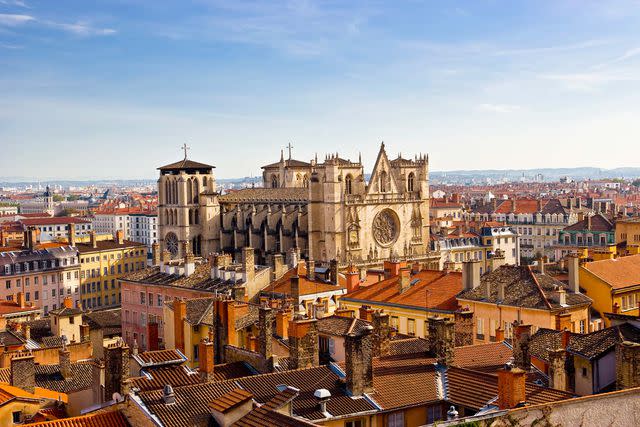
Atlantide Phototravel/Getty Images
Only two hours from Paris by high-speed train, Lyon is another university town that beckons when you’re eager for city vibes at a slower, more laid-back pace than Paris. Known as the gastronomic capital of France, it’s home to Restaurant Paul Bocuse, a paragon of French dining. Cobbled streets, narrow alleyways, and the smell of freshly baked bread are just some of the main draws to this pretty city, which is home to several UNESCO World Heritage sites. The ornate limestone Basilica of Notre-Dame de Fourvière offers the best view of Lyon from its terrace, while the Gallo-Roman Museum (built into Fourvière hill) is home to ancient Roman artifacts that offer a glimpse at the city’s history. All throughout the old town are traboules, covered passageways that date back to the 4th century.
Loire Valley
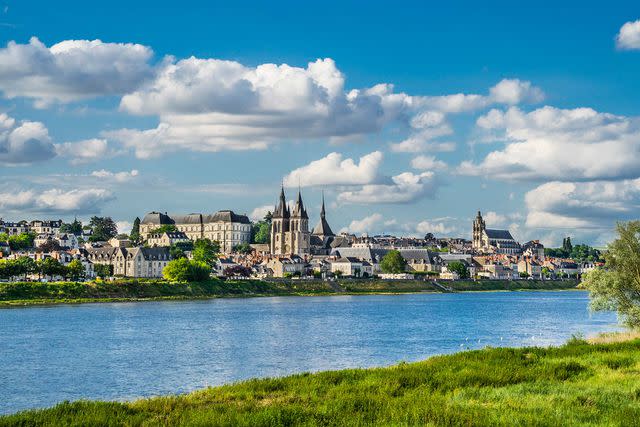
Manfred Gottschalk/Getty Images
If châteaux-hopping is your idea of a good time, look no further than a day trip to the Loire Valley. All along Europe’s longest river, the Loire, you’ll find over 20 Renaissance-era castles that are open to the public, each offering a healthy dose of art, architecture, and French pomp and circumstance to visitors. If you’re day-tripping, narrow it down to a visit of Chambord and Chenonceau, two of the region’s most extravagant châteaux. If you’re able to swing a weekend trip, spend a few hours wandering around Orléans, a city famous for its connection to Joan of Arc. You may want to consider renting a bike, as cyclists flock to this region for the renowned Loire à Vélo cycle route, which spans nearly 600 miles. And after all those castles and cycling, be sure to leave time to indulge at some of the local wineries, which are about as omnipresent as the castles.
Rouen
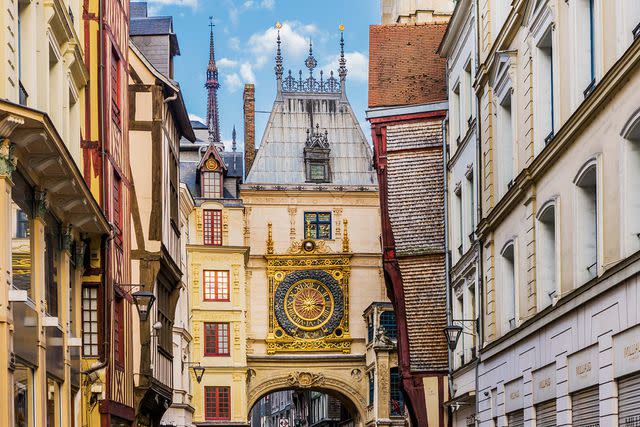
Maremagnum/Getty Images
The medieval capital of Normandy is only an hour and a half from Paris by train. Walkable and full of enough art and architecture to merit an easy few days of exploration, Rouen is difficult to squeeze into just a day trip. To make the most of your time, arrive early. After a visit to the city’s Gothic Cathédrale Notre Dame, walk yourself over to St. Joan of Arc’s church, a marvel of stained glass that honors the young heroine who was burned at the stake in the city center. The Musée des Beaux Arts, commissioned by Napoleon, is another cultural must-see. While Rouen is full of history, it’s also doing its best to keep up with the times. Stop by Public for natural wine, oysters, and top-rated people watching in a square full of Disney-esque timbered buildings.
Auvers-sur-Oise
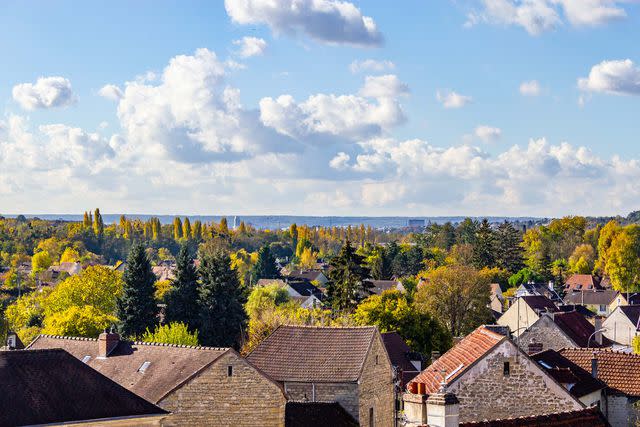
lisandrotrarbach/Getty Images
Vincent van Gogh was enamored with Auvers-sur-Oise, and it’s easy to see why. The painter, who died in the picturesque town just 18 miles outside of Paris, is now a part of the draw to this beautiful French village, where you can visit his grave as well as several landmarks and landscapes that feature heavily in his later works, including the Notre-Dame-de-l’Assomption church. After a few hours of exploring, stop by the Absinthe Museum for an apéro before catching the train back to Paris.
Deauville
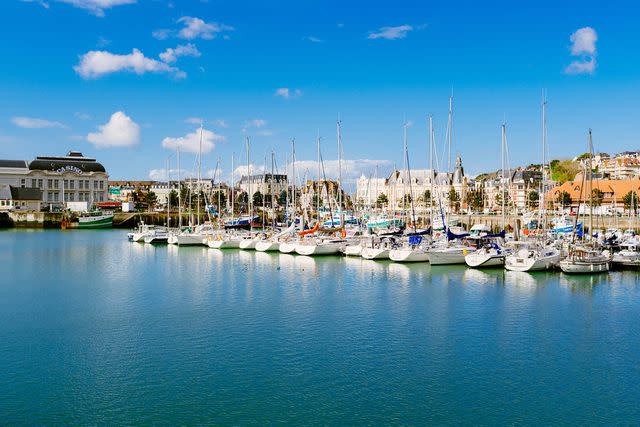
lucentius/Getty Images
Dubbed the Parisian Riviera thanks to the influx of well-heeled city folk who flock there in the summer months, Deauville is the perfect place to escape a canicule (heat wave). If you’re renting a car, it’s just a two-hour drive away from Paris (by train, it’s about 30 minutes further). Beyond a spectacular stretch of sand dotted with colorful umbrellas and a 1920s boardwalk featuring retro bathing cabins, there are plenty of cultural activities to keep you busy in this seaside town, from film festivals to high-end boutiques.
Caen
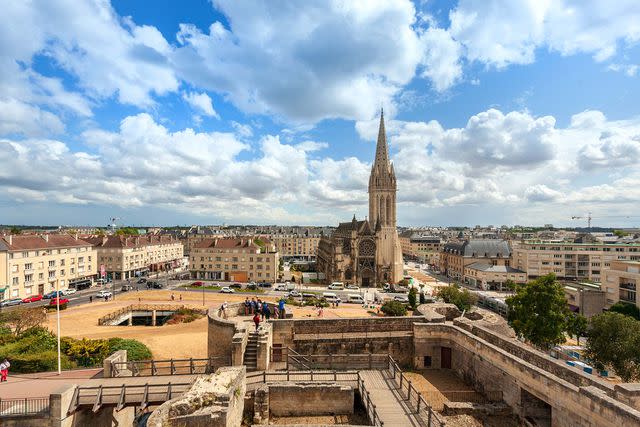
dutchphotography/Getty Images
History buffs will find a visit to Caen worthwhile just to meander around the Mémorial de Caen, a spectacular museum dedicated to World War II, the 1944 Battle of Normandy, and the Cold War. The exhibits muse on the fragile nature of peace and are a meaningful stop en route to the D-Day Beaches and Pointe du Hoc, the stark vertical cliff where you can walk around bunkers high above the English Channel.
Bordeaux
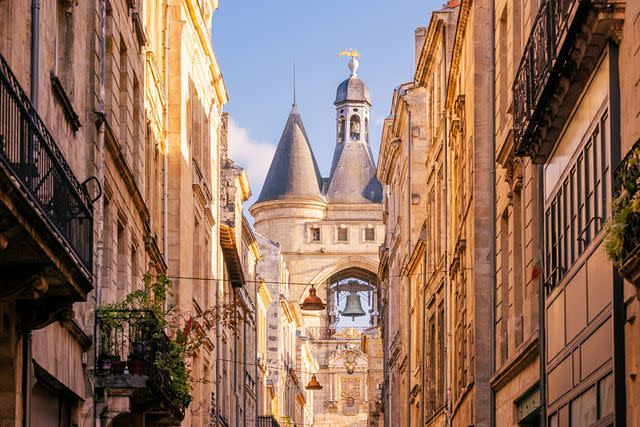
Alexander Spatari/Getty Images
Two hours south of Paris by train lies Bordeaux, where many young Parisians flocked during the COVID-19 pandemic in search of cheaper rent and more space. As a result, the city is in the midst of a cultural renaissance, with a fresh crop of restaurants, bars, and coffee shops coming up faster than new vines. The region, of course, is famous for its namesake grape, which you can learn all about at the interactive La Cité du Vin museum — an architectural delight in its own right. Another welcome addition to the city’s scene is Bassins des Lumières, a massive digital art space housed in the city’s former submarine base.
For more Travel & Leisure news, make sure to sign up for our newsletter!
Read the original article on Travel & Leisure.

